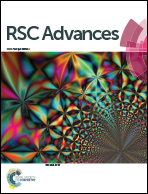Two models to estimate the density of organic cocrystals†
Abstract
Two models for predicting the density of organic cocrystals composed of energetic organic cocrystals and general organic cocrystals containing nitro groups were obtained. Sixty organic cocrystals in which the ratio of component molecules is 1 : 1 were studied as the dataset. Model-I was based on the artificial neural network (ANN) to predict the density of the cocrystals, which used (six) input parameters of the component molecules. The root mean square error (RMSE) of the ANN model was 0.033, the mean absolute error (MAE) was 0.023, and the coefficient of determination (R2) was 0.920. Model-II used the surface electrostatic potential correction method to predict the cocrystal density. The corresponding RMSE, MAE, and R2 were 0.055, 0.045, and 0.716, respectively. The performance of Model-I is better than that of Model-II.



 Please wait while we load your content...
Please wait while we load your content...